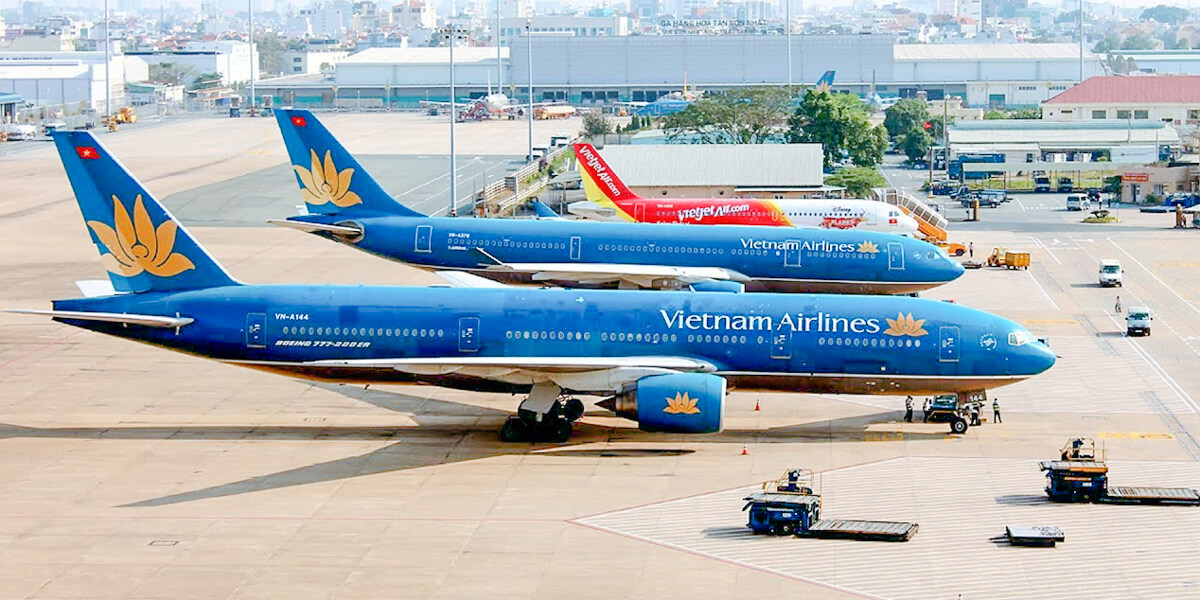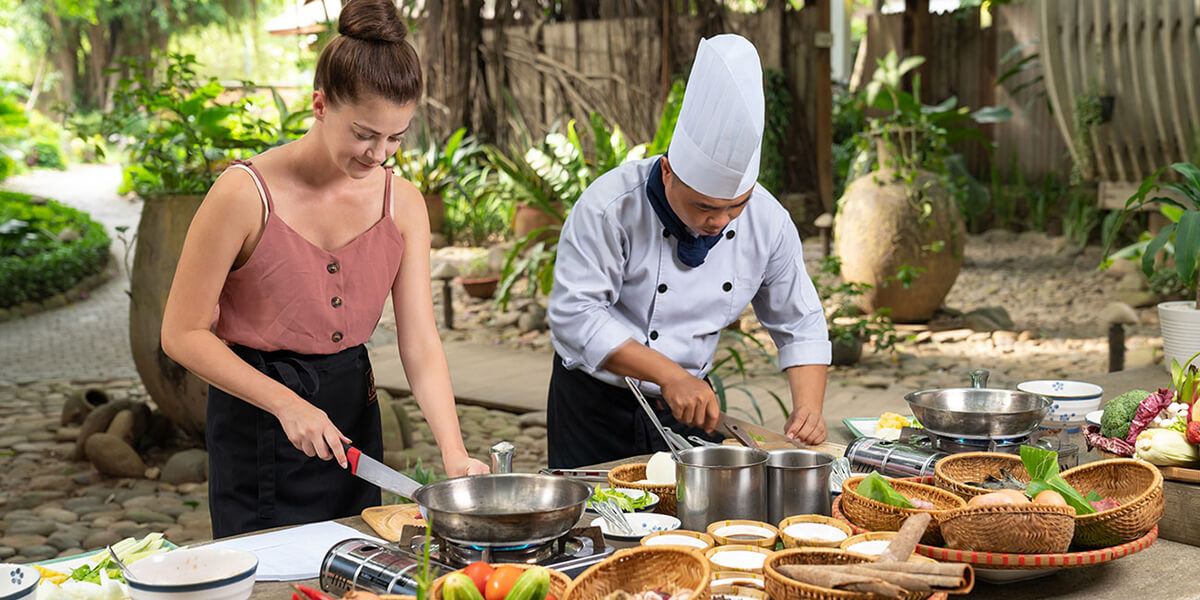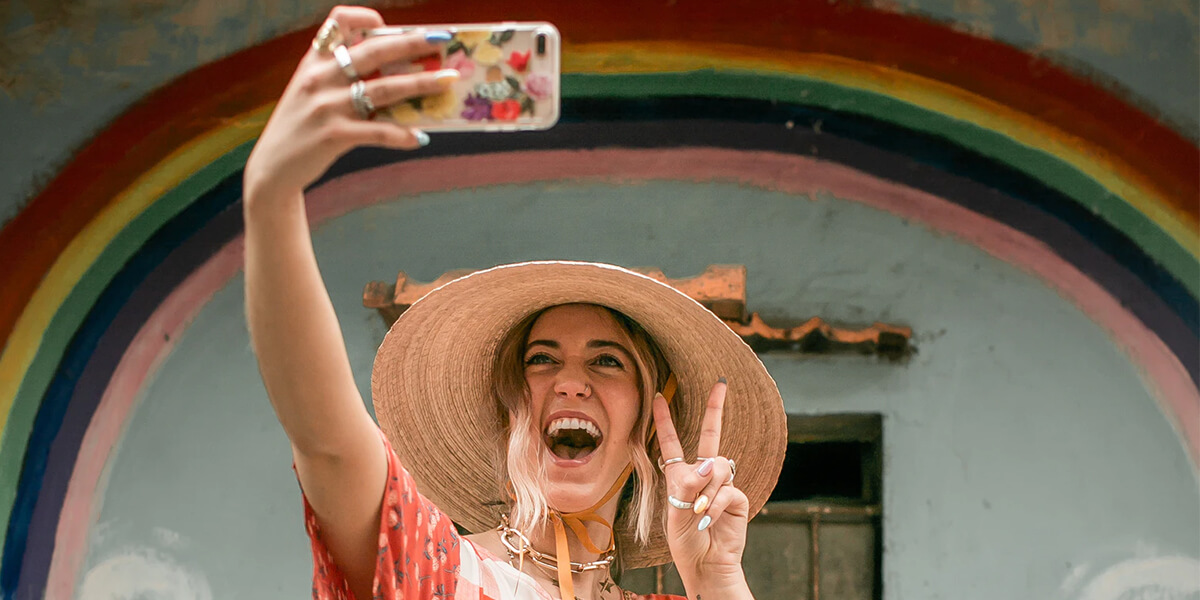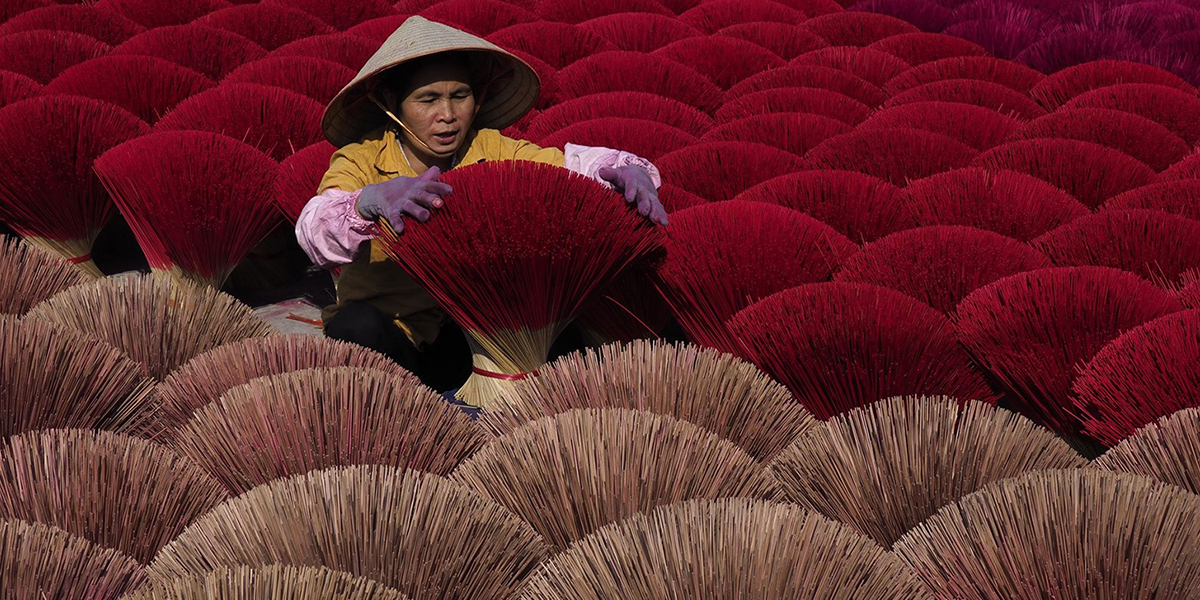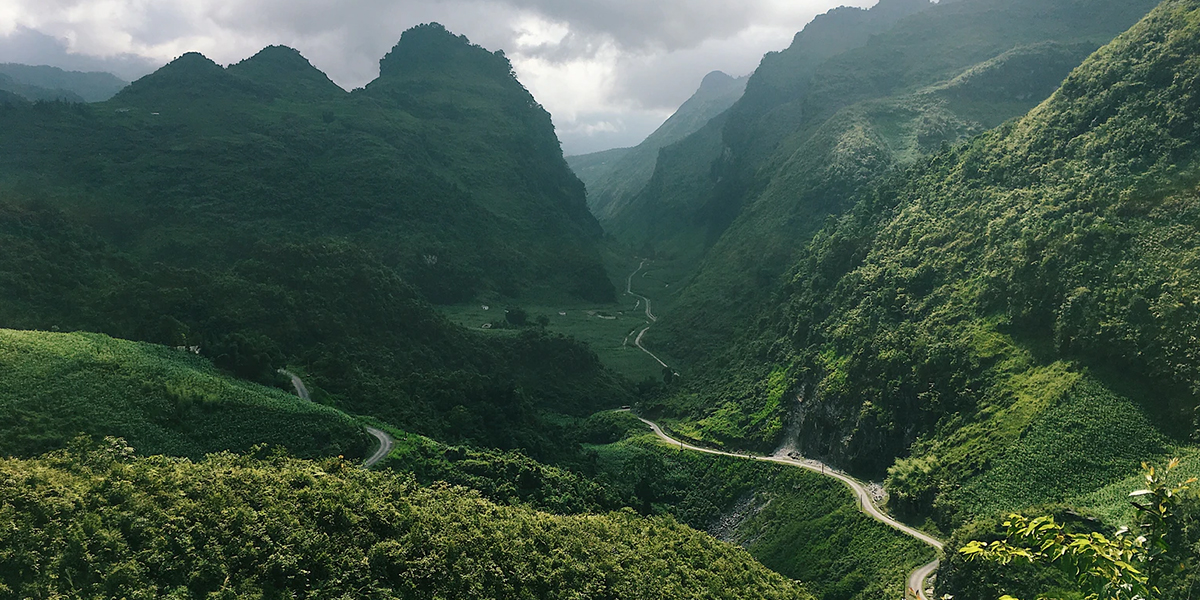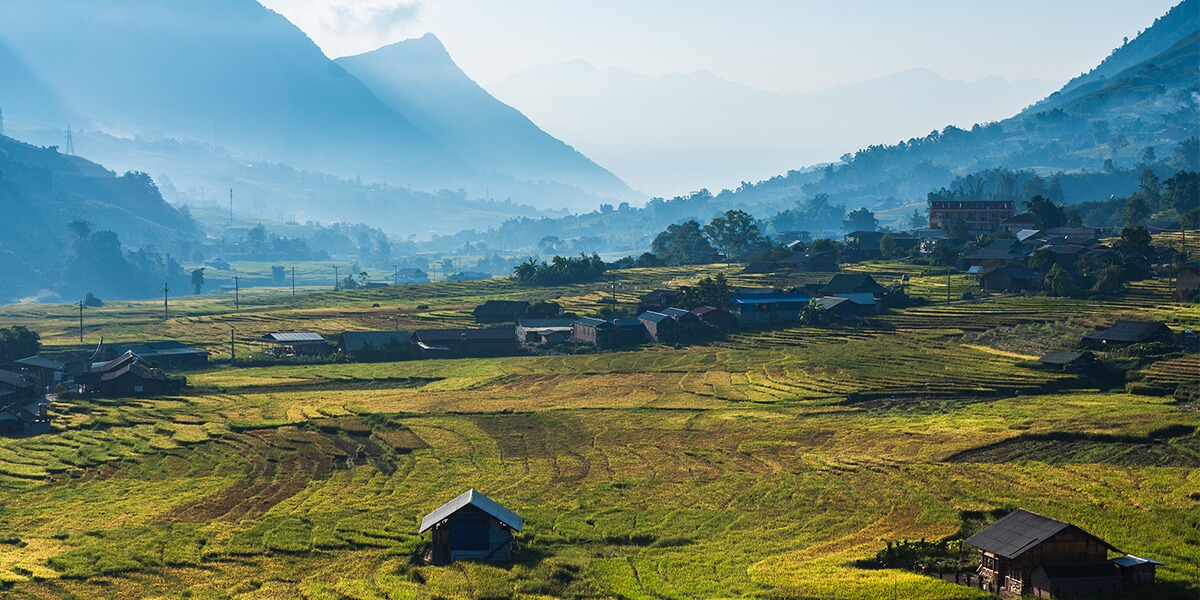I - The Temple of Literature introduction

Nevertheless, the Imperial academy in Hanoi was destroyed by the French bombing in 1946 and had been restored several times later on. Especially in 1999, the Hanoi administration built two wooden structures in the temple's campus. One structure is used for worshiping Confucian and his students. The other one is for worshipping Chu Van An and displaying items of the ancient temple which contain the country’s traditional values of education holding seminars.

II - Architecture of The Temple of Literature in Vietnam

1 - The first courtyard
“Đại Trung Môn” (The great middle gate)

After passing the main gate of the Temple of Literature, travelers will get to the Great Middle Gate “Dai Trung Mon”. The name “Đại Trung Môn” (The great middle gate) is a combination of two great Confucianism books which are “Đại Học” (Great learning) and “Trung Dung” ( The Doctrine of the Mean). On the right and the left side of Dai Trung Gate, there are two smaller gates named Dai Tai (Attained Talent) and Thanh Duc (Accomplished Virtue) expressing the aim of training and educating. Due to the ancient Orient concept, the left side is more important than the right (Confucius point of view); therefore this structure implies that virtue is more important than talent.
Another distinguishing feature of Dai Trung Gate that needs to be mentioned is the carp symbol on the top of the gate originated from an old Chinese legend: "Once upon a time, the God organised a competition requiring contestants to swim upstream against the river's strong current. Several fish attended this competition, but only a few are capable of the final leap over the waterfall. If a carp successfully makes the jump, it can transform into a powerful dragon." The carp in the gate is a metaphor for Vietnamese students who have to overcome a lot of challenges such as passing the Regional exam (Hương examination), National exam (Hội examination) and Royal exam (Đình examination) to become government officials. If you continue to go inside, you will find out that the carp symbol is replaced by dragon symbols showing student’s promotion in social rank.
2 - The second courtyard of the Temple of Literature

Located in the Second Courtyard is Khue Van Pavilion (Constellation of Literature Pavilion) which was built in 1805 on four white-washed stone stilts. Its size is not big but its architecture is unique and harmonious. At the top is a red-color with two circular windows, and an elaborate roof which is the combination of the circle and the square. In Vietnamese culture, the circle represents the sky and the square represents the earth whose combination is the symbol of the yin and yang harmony. Moreover, the name - Khue Van is given from the brightest star in the sky, carries the wish for development and prosperity for education and culture of Vietnam.
In the past, the constellation of Literature Pavilion was the place where the king and his officials gathered to discuss and analyze the essays of prominent students passing the national examination. Nowadays, it is recognized as the symbol of Hanoi – Vietnam’s capital.
3 - The third courtyard
Thien Quang well and Doctor Stelae

If you pass the Khue Van Pavilion, you can immediately reach the Thien Quang Well (Well of Heavenly Clarity). This well is one of the key factors that keep the atmosphere of the temple tranquil and help purify people’s minds. Furthermore, it functioned as a mirror for people to arrange their dress before entering the most sacred part of the complex. In terms of its name, Thien Quang means the light from the sky implying the hope that students would receive the elite from the sky then develop their knowledge, virtue; and devote themselves to the country.
However, the treasure that stands out in this courtyard is the existence of 82 Stelae of Doctors divided into 2 rows along two sides of Thien Quang Well. In 1484, the Emperor Lê Thánh Tông erected 116 steles with elaborate motifs to honor the talented and encourage study. All steles were put on the back of turtles and carved the name of doctors who passed the imperial examinations. The Turtle in Van Mieu, one of the nation’s four holy creatures, is a symbol of longevity and wisdom so the names of successful students would last forever.
Originally, there were 91 doctorate steles. However, only 82 of them are left until now due to wars and natural disasters. They were officially recognized in a list of world's documentary heritage by UNESCO on March 9, 2010. Since then, the temple has been more and more famous with international travelers because of its historic and cultural values.
4 - The fourth courtyard

In the center is Dai Bai Duong (House of Ceremony) where Emperors and Fellows made their offerings to Confucius and his four closest disciples Yanhui, Zengshen, Zisi, and Mencius. Especially, new doctors who passed the imperial examination would come there to kneel and bow to show their respect. Also, there is an exhibition displaying inkwell, pens, books, and personal artifacts of some students that studied at the temple.
5 - The fifth courtyard in the Temple of Literature

In 1076, the Imperial Academy was constructed under Emperor Ly Nhan Tong reign and expanded through dynasties. Despite its original purpose was teaching princes and nobles only, it became the first university in Vietnam where a lot of talented students studied afterward. However, it was destroyed by the French in 1946 and reconstructed as a temple in 2000.
The ground floor is dedicated to Chu Van An (a prestigious teacher who had significant contributions to Vietnamese education) and displays Confucian education in Vietnam. The second floor is dedicated to three Kings who had huge influence on the development of the temple and the academy (Ly Thanh Tong founded the temple, Ly Nhan Tong built the Imperial Academy, and Le Thanh Tong erected the turtle stone stelaes).
Today, the Imperial Academy has become an important tourist destination of Hanoi in particular and Vietnam in general. With a long history, it honors the talents, the national traditions and the culture and education of Vietnam.
III - Hanoi Temple of Literature travel guide
Van Mieu is only 2.1 km away from Hoan Kiem Lake - the center of Hanoi. Therefore, travelers can get there by several means of transportation:
By taxi: 6 minutes/ 35.000VND
By bus: 15 minutes/ 7000VND (Nearest bus stop: 4B Tràng Thi)
On foot: 25 minutes
1 - Opening hours
Opening days: Monday, Tuesday, Wednesday, Thursday, Friday and Sunday
Opening times:
In summer ( From April to October) : 07:30-17:30
In winter (From October to April): 08:00-17:00
2 - Entrance fee
Adult: 30,000 VND (~US$ 1.3) for Vietnamese and foreigners
Students: 15,000 VND (~US$ 0.7) (ID, students card required)
Children under 15: Free
3 - Good to know
- Carry out the civilized lifestyle when being in the place: do not smoke, protect the environment of the place (Throw the trash in the right place), respect the relic and obey the regulations.
- Do not make videos and take photos without permission.
- Dress code when visiting Temple of Literature: Get dressed politely. In particular, no hat, shorts, mini skirt or tank-top.
- In addition, the management staff provide the presenting audio guide equipment that is really helpful with many foreign languages such as French and English to support the best for the foreigner visitors.
4 - What to eat around the Temple

When visiting the Temple, you can walk around and have a food tour at some restaurants highly recommended below:
Thich An Pho Restaurant
- Address: 67 Quoc Tu Giam Street, Hanoi Vietnam
- Price range: $1- $3
- Cuisines: Vietnamese
- Meals: Breakfast, Lunch, Dinner
Van Mieu Deli
- Address: 39 & 41 Van Mieu Dong Da, Hanoi, Vietnam
- Cuisines: Vietnamese, Asian
- Special diets: Vegetarian Friendly, Vegan Options
- Meals: Lunch, Dinner, Brunch, Drinks
5 - Where to visit around the Temple of Literature?
Fine Arts Museum - The great place for art lovers.

- Address: No. 66 Nguyen Thai Hoc Street, Dien Ban Ward, Ba Dinh District, Hanoi
- Opening hours: Every day except for Monday, 08:30-17:00
- Entrance fee: VND 40,000 for adults and VND 20,000 for children.
Lenin Park - Perfect place to relax and experience daily life of the local

- Address: 28A Dien Bien Phu, Ba Dinh, Hanoi, Vietnam
Vietnam Military History Museum

Its exhibition artifacts are displayed due to the flow of Vietnamese history starting from the initiating point of Vietnam - Hung Vuong Era, followed by the period of being invaded by Chinese lasting for over one thousand years, as well as struggling time against the French colony during the period from 19th to the early 20th century. Its topic revolves around the tradition of Vietnamese as being courageous and insistent in protecting national integrity and independence.
- Address: No. 28A Dien Bien Phu Street, Dien Ban Ward, Ba Dinh District, Hanoi
- Opening hours: 08:00 -16:30 every day except for Monday and Friday
- Entrance fee: International visitors: US$1.8/person
The Temple of Literature in Hanoi stands for a symbol of the capital where tourists can visit and have a chance to research and understand more and more about Vietnam cultural values.







 — Quan Nguyen
— Quan Nguyen
